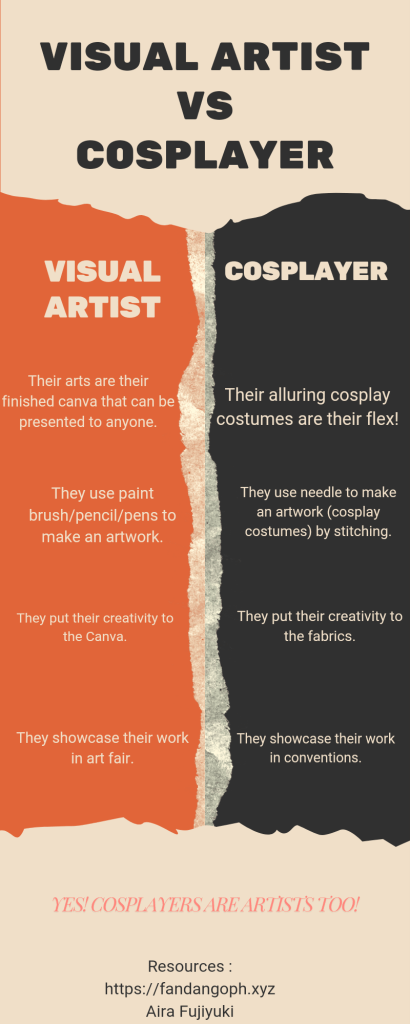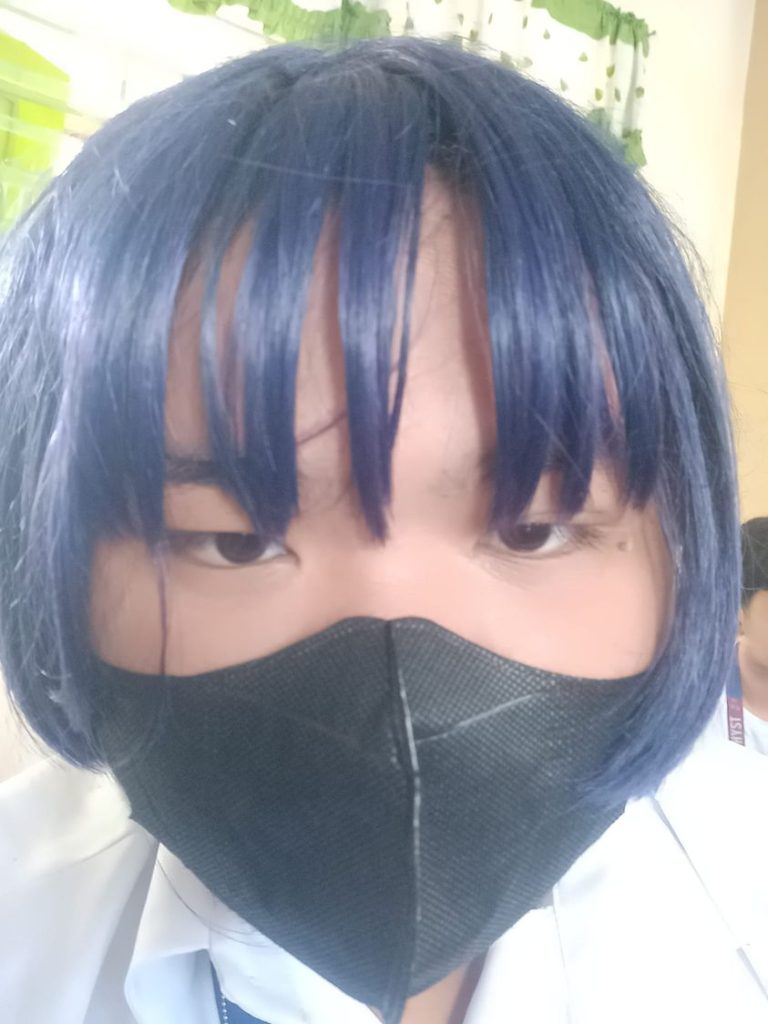Is Cosplay an Art or Just a Dress Up Game? Big answer, yes!
Is cosplay an art? Short answer for you, yes!

Cosplay, often inspired by anime, video games, comics and popular culture, is a vibrant and intricate form of artistic expression within the realm of visual arts and entertainment. Like a painter uses a canvas, cosplayers use wigs and costumes to bring characters to life.
Through the meticulous creation of attire and accessories, cosplayers exhibit exceptional craftsmanship and creativity. Each stitch and detail in a costume is akin to brush strokes on a masterpiece.
This form of art requires dedication, skill, and a deep understanding of the source material, whether it be western comics or anime, transforming ideas into tangible reality.
The Artistic Elements of Cosplay Hobby
Central to cosplay’s artistic nature is the creation of costumes, where each piece is crafted with precision. Cosplayers meticulously select fabrics, construct patterns, and employ various techniques to ensure authenticity. This craftsmanship transforms clothing into wearable pieces of art, demonstrating both technical skill and creative vision.
We can compare it to the painters that selecting a type of paint to use for their project, drawing and outline and produce a masterpiece. In this given art form transforms a piece of ink into an eye-catching visual art while cosplay can turns a fabric into a wearable canva
Crafting Detailed Costumes
Cosplay costumes are wearable pieces of art in the domain of visual arts, demonstrating both technical skill and creative vision.
Cosplayers often spend hundreds of hours meticulously crafting their costumes and accessories to perfection, contributing significantly to the entertainment industry.
This dedication to detail involves various techniques such as sewing, fabric painting, and armor crafting, which display a high level of craftsmanship. Attention to accuracy is crucial, as each costume piece is a testament to the creator’s artistry.
Creating intricate costumes—tailoring a character from imagination into reality—requires extensive knowledge and skills in materials, construction techniques, and even prop-making. Each element embodies the cosplayer’s commitment to bringing their character to life.
Cosplay requires you to be a resourceful person to save up money from making a cosplay costumes. Many cosplayers are turning old recyclable materials to a beautiful piece of props. This kind of skill is not being acknowledge in other art forms but cosplay embrace resourcefulness.
Sculpting with Makeup and Prosthetics
If digital artist “render” their finalized digital canva to make it appealing to their client. Cosplayers also have their own rendering feature in this art form.
Sculpting with makeup and prosthetics elevates cosplay to an art form by transforming faces and bodies into living characters.
- Prosthetics: Crafting detailed masks, horns, and other custom facial features
- Makeup: Using contouring, shading, and painting techniques to simulate realistic or fantastical elements.
- Special Effects: Incorporating fake wounds, scars, and dynamic elements that enhance the character’s narrative.
- Body Paint: Creating full-body designs that seamlessly blend with the costume for an immersive effect
These elements require advanced technical skills and a deep understanding of facial and bodily anatomy.
The meticulous process adds depth and authenticity, allowing cosplayers to fully embody their favorite fictional characters.
Cosplay as Performance Art
Cosplay transcends traditional notions of dress-up by incorporating expressive storytelling through physical embodiment, voice modulation, and role-playing. This dynamic interaction transforms the cosplayer into a living, breathing representation of their character, drawing audiences into a shared narrative experience.
Cosplayers often attend conventions, participate in competitions, and engage in photoshoots to showcase their cosplay performance art, making a substantial impact on the entertainment landscape. This not only highlights their dedication but also the depth of creativity involved.
Embodying Characters
Cosplay involves more than just wearing a costume; it requires embodying a character’s essence and personality, often drawing inspiration from popular anime series.
- Research: Understanding the character’s backstory, motivations, and quirks.
- Costume Development: Designing and creating costumes that are true to the character.
- Wig Styling: Crafting wigs to perfectly mimic the character’s hair.
- Makeup Application: Using makeup to mimic the character’s features and expressions.
- Role-Playing: Adopting the mannerisms, speech patterns, and behaviors of the character.These steps highlight the intricate process involved in truly becoming the character.Each element requires specialized skills, merging craftsmanship with performance art.This transformative art form fosters creativity, skill, and dedication.
Storytelling through Movement
In cosplay, movement plays a crucial role, elevating the performance aspect to a form of living art.
When cosplayers replicate a character’s movements and mannerisms in their cosplay, they are not merely imitating; they are engaging in a dynamic storytelling process that brings to life figures from popular culture. This enactment is an essential component, merging physical expression with the narrative essence of the character.
Moreover, subtle gestures and elaborate choreography can enhance the authenticity of the portrayal. A well-executed movement can convey emotions and motivations that words or static images may fail to express, creating an immersive experience for the audience.
Thus, through their physical performance, cosplayers exhibit a profound understanding of their characters while showcasing their capability to tell compelling stories. This level of embodiment and theatrics underscores the artistic depth of cosplay, transforming it into a narrative-driven art form.
The Role of Creativity in Cosplay
Creativity is the cornerstone of cosplay, where enthusiasts transform into beloved characters through intricate costumes and wigs, invoking their imaginative prowess and artistic skills. This entails not just visual accuracy but also emotional resonance, ensuring that each portrayal captures the spirit of the character.
Such creative undertakings require a blend of technical knowledge and artistic expression, challenging cosplayers to innovate and bring new dimensions to their craft. Most of them are striving to be a better cosplayer.
Designing Original Concepts
Original concepts require unique designs.
When cosplayers create original concepts, they channel their creativity into crafting unique characters. This process demands a deep understanding of design principles, color theory, and fabric manipulation, requiring both artistry and technical expertise. Additionally, cosplayers must consider how to integrate various elements cohesively to create a visually compelling and original character.
This phase is highly imaginative.
The transition from idea to tangible costume can be intricate – from sketching templates to choosing the right materials. Talented cosplayers blend handcrafting skills, including sewing, armor-making, and wig-styling, to achieve their envisioned designs.
By infusing personal touches, cosplayers showcase exceptional creativity in generating original concepts. This proves that cosplay extends beyond replication, embracing the innovative essence of art through distinct and personalized creations.
Closet Cosplay (a.k.a Casual Cosplay)

This is an example of my Casual Cosplay of Wanderer (Wanderer) from Genshin Impact. I just wear a wig and use my school uniform as my costume. Now, I turned a normal Wanderer to a student Wanderer! You can buy a high quality Wanderer Cosplay wig from Role Cosplay.
If a visual artist cannot afford an ordinary art materials, they will use anything they found from their home that can produce a color to their canva.
This concept is same as for cosplayers. If cosplayers cannot afford an ordinary costume, they will go to casual cosplay!
I love doing this form of cosplay if I’m thight on budget.
Casual cosplay is a form of cosplay style that an artist will use a normal clothes than an ordinary costume that will costs them a hundred dollars.
All they need to do here is utilizing their current cloth closet to turn it into a full-pledge unique cosplay.
Just style a cosplay wig, do a makeup, craft a cheap prop and wear a normal cloth. That’s it, you already a cosplayer!
Customizing Store-Bought Items
Customizing store-bought items is common.
Many cosplayers begin with pre-made pieces. They make alterations to these base components to ensure accuracy and authenticity to their chosen character, often by adding details, modifying colors, or reshaping elements. Essentially, this process allows them to balance artistic creativity with practical constraints, achieving remarkable authenticity.
This endeavor requires skill and patience. As well as being resourceful to maximize unused materials from their home.
Cosplayers often repurpose materials – an ordinary jacket might be painted, embroidered, or tailored to match a fictional character’s attire. Thus, they transform mass-produced goods into one-of-a-kind masterpieces, embodying their character’s essence.
This meticulous adaptation not only demonstrates cosplayers’ dedication but also their artistic vision. Through these transformations, they exhibit prowess in areas like textile manipulation, painting, and structural adjustments, reinforcing that cosplay is a sophisticated art form celebrating creativity and innovation.
The Community Perspective
The cosplay community sees their craft as a legitimate art form, valuing the creative process and the skills involved in costume creation. They engage in workshops, forums, and conventions, all aimed at fostering artistic growth and collaboration.
Such gatherings provide critical support and inspiration, further reinforcing the perception of cosplay as a respected and vibrant artistic pursuit.
Recognition in Conventions
Conventions play a vital role in acknowledging cosplay as an art form, offering platforms for cosplayers to showcase their creativity and skills.
- Cosplay Competitions: Here, participants present their intricately designed costumes and perform character portrayals, judged on craftsmanship and authenticity.
- Panel Discussions: Expert cosplayers share insights and techniques on costume crafting, promoting cosplay as a specialized art discipline.
- Exhibition Spaces: Dedicated areas where cosplayers exhibit their work, allowing attendees to appreciate the artistic effort involved in each costume.
- Workshops: Hands-on sessions that teach various aspects of cosplay creation, reinforcing the community’s commitment to artistic development.
- Online communities: The internet has a vast amount of cosplay communities that gives a cosplayer a chance to showcase their artistry.
- Press Media: Many popular cosplayers are getting featured in magazines. This can be a best way to showcase their artistry in the mass media.
These recognition avenues in conventions and online world help elevate cosplay beyond mere recreation, highlighting the skill and artistry involved. Moreover, such platforms validate the cosplayers’ dedication to cosplay, encouraging them to pursue even more ambitious projects and innovations. Whether this platform is online or offline, it can be a valuable tools to showcase their artwork.
Celebrating Talent and Skill
Cosplay is a celebration of creativity, talent, and dedication. Creative expression is one of the benefits of cosplaying.
Participants meticulously design and handcraft each costume, often employing techniques from various disciplines such as sewing, prop-making, make-up and wig-styling. These costumes are not mere outfits but are expressions of artistic vision, representing countless hours of labour and attention to detail. Through these efforts, cosplayers bring to life characters from different media, showcasing their artistic skills in a tangible form.
Furthermore, these talents seamlessly merge with the discipline of visual arts, extending to performance artistry as well. Cosplayers often embody the mannerisms, speech, and behaviours of the characters they portray, elevating the act from simple dress-up to immersive role-playing. This combination of visual and performance arts exemplifies the versatility and depth of the medium.
Is Cosplay an art? Why it’s should be Yes?
Ultimately, by recognizing cosplay as an art form, we acknowledge the immense talent and skill involved, especially as it often draws heavily from popular culture. This recognition not only elevates the status of cosplay within cultural and artistic spaces but also inspires others to appreciate and perhaps even explore their artistic capabilities. It is through this celebration of skill that cosplay transcends its origins, becoming a respected and cherished form of art.
In conclusion, cosplay transcends the boundaries of a mere dress-up game and firmly establishes itself as a legitimate art form. The meticulous craftsmanship involved in creating wigs and costumes, the dedication to embodying characters, and the creativity required to bring fictional worlds to life all underscore the artistic essence of cosplay. By recognizing cosplay as an art, we not only honor the skill and passion of its practitioners but also enrich our cultural landscape with diverse and imaginative expressions. Therefore, it is clear that cosplay deserves its place in the realm of art.
